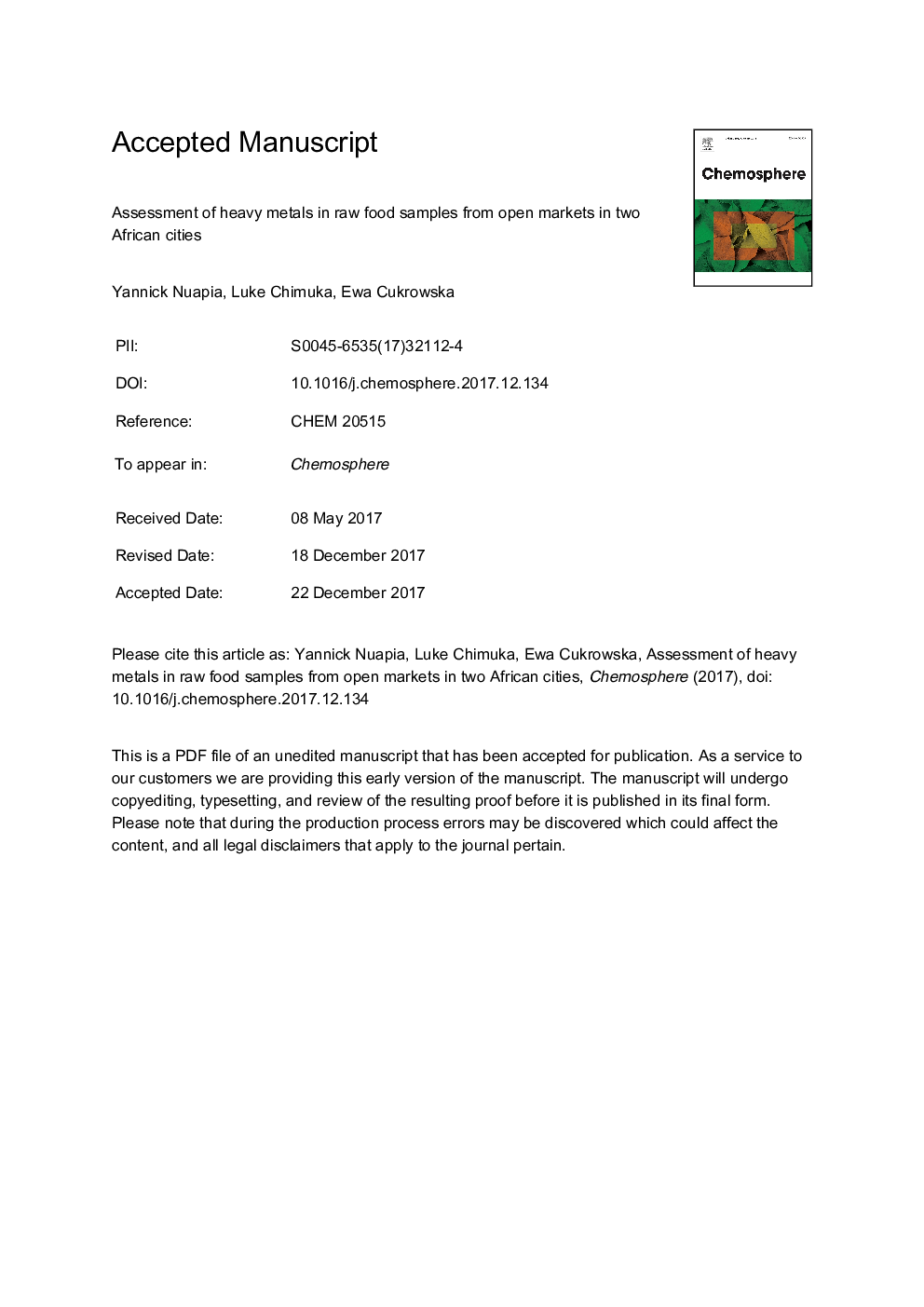| Article ID | Journal | Published Year | Pages | File Type |
|---|---|---|---|---|
| 8852109 | Chemosphere | 2018 | 27 Pages |
Abstract
The present study was performed to assess the level of biologically potent metallic elements (Al, Cd, Cr, Cu, Hg, Mn, Pb and Zn), metalloid (As) and non-metal (Se) in different raw food from open markets in Kinshasa (Democratic Republic of Congo) and Johannesburg (South Africa). Hundred twenty different food samples comprising of cabbage, bean, beef and fish were collected, digested in the microwave system and analysed for trace metals using ICP-OES, ICP-MS and mercury analyser. The obtained results were used to evaluate the health risk of these elements via consumption of foods. The investigation revealed that the mean level of trace elements ranged Al: 1.62â¯Â±â¯0.32 to 52.10â¯Â±â¯3.45, As: 1.62â¯Â±â¯0.32 to 5.33â¯Â±â¯1.04, Cd: 0.16â¯Â±â¯0.09 to 3.93â¯Â±â¯0.12, Cr: 0.58â¯Â±â¯0.24 to 17.29â¯Â±â¯2.03, Cu: 0.69â¯Â±â¯0.15 to 15.70â¯Â±â¯1.67, Hg: 1.53â¯Â±â¯0.1 to 2.94â¯Â±â¯0.23, Mn: 5.34â¯Â±â¯1.37 to 18.31â¯Â±â¯3.45, Pb: 0.16â¯Â±â¯0.09 to 4.14â¯Â±â¯1.08, Se: 0.18â¯Â±â¯0.08 to 1.41â¯Â±â¯0.97, Zn: 5.47â¯Â±â¯1.83 to 75.12â¯Â±â¯5.67â¯mgâ¯kgâ1. The average values of As, Cd, Cr, Cu, Hg, Mn, Pb, Se and Zn in raw foods collected from Johannesburg market were significantly higher (pâ¯<â¯0.05) than those from the Kinshasa market. While the highest Al contents (pâ¯<â¯0.05) were found in the food sold in Kinshasa open market. The levels of most studied metals in the raw foods were exceeding the recommended maximum acceptable limit proposed by the Joint FAO/WHO Expert Committee on Food. The combined Target Hazard Quotients (THQ) values for all samples from both markets were greater than 1 which indicates a potential health risk to the local consumer.
Related Topics
Life Sciences
Environmental Science
Environmental Chemistry
Authors
Yannick Nuapia, Luke Chimuka, Ewa Cukrowska,
